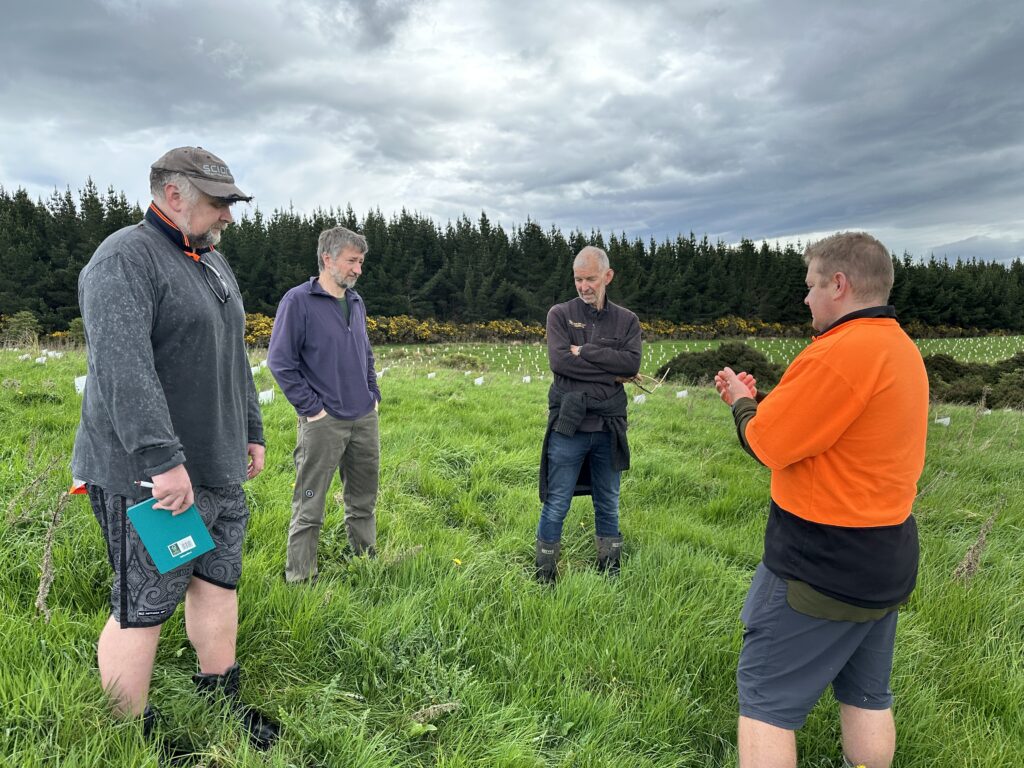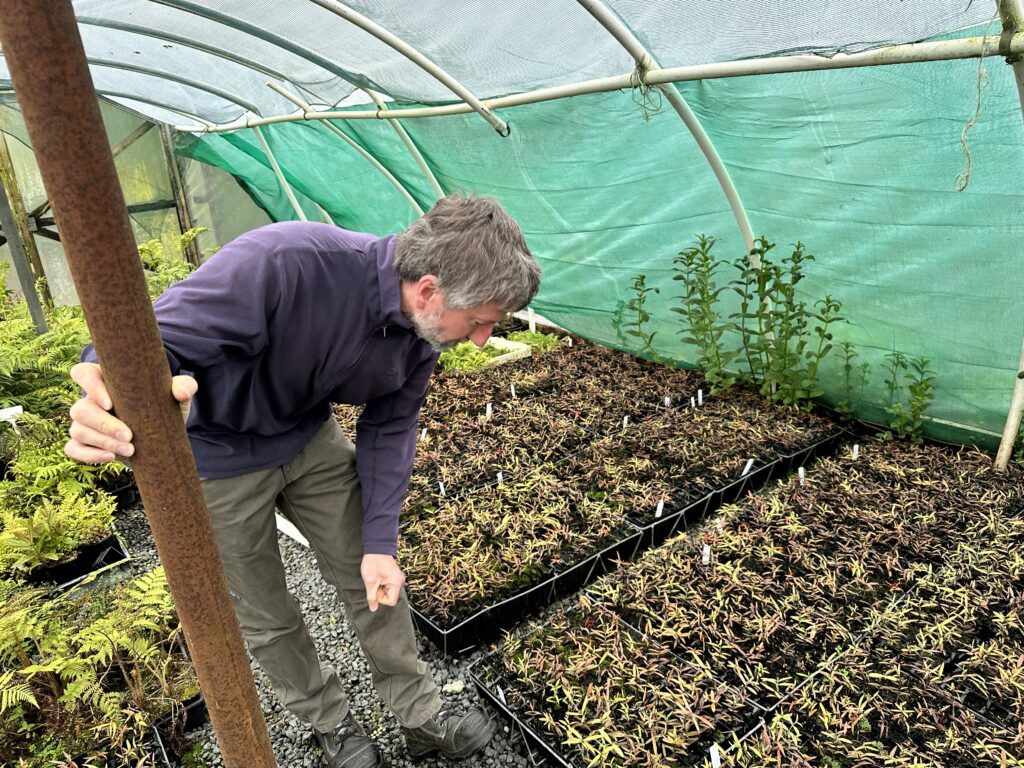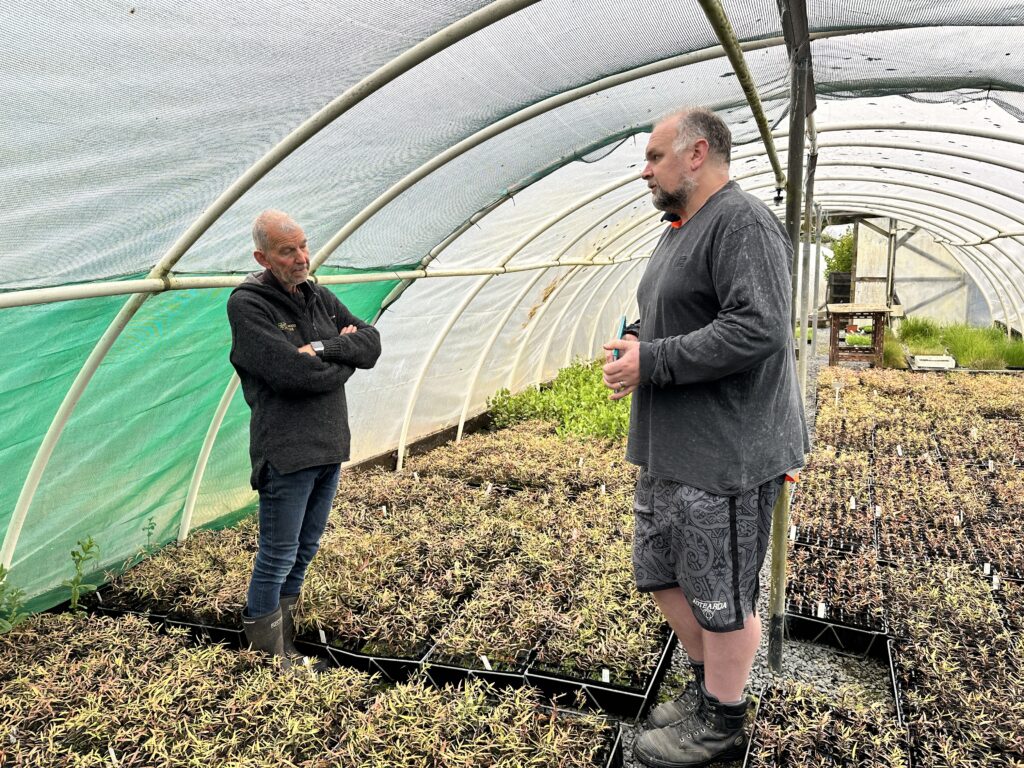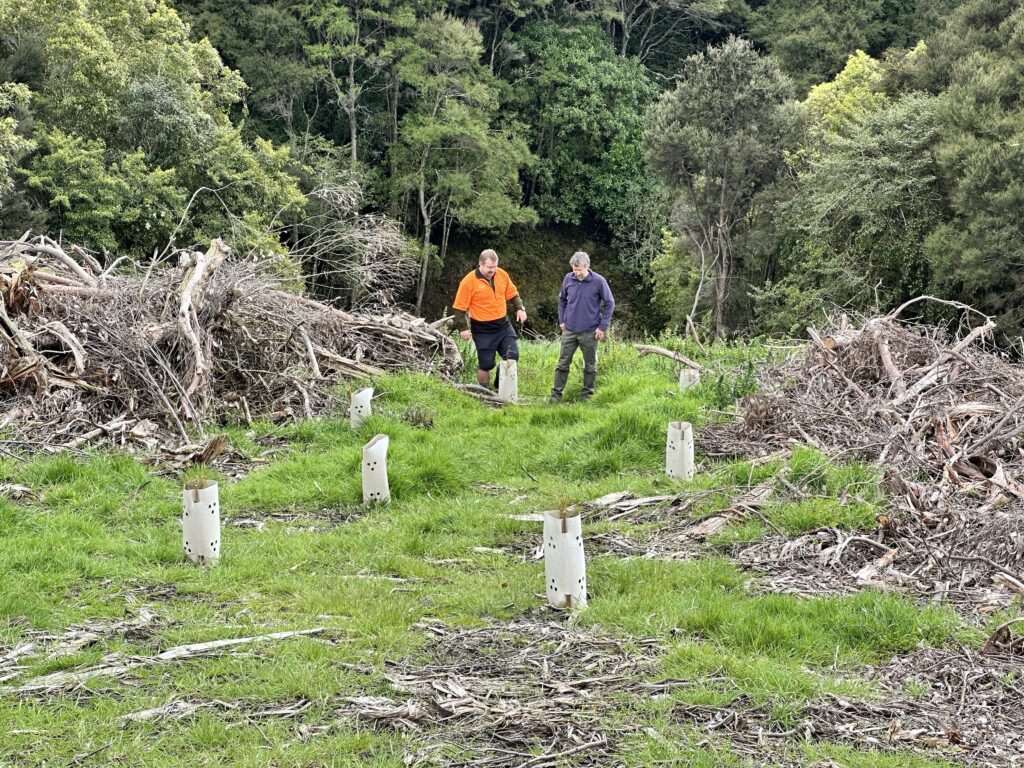Scion Research Assessment Visit
When I was removing the eucalyptus trees in March 2024, I spoke to Scion Research emeritus scientist Greg Steward and updated him on the project. He said that he raises my project whenever he gets the chance. His efforts have produced a result.
Dr Simeon Smaill, (forestry scientist and portfolio leader for establishing indigenous forests) from Scion Research contacted me about undertaking a long-term study of my forest. He mentioned that Scion had received funding from the Ministry of Primary Industries for an indigenous forestry study, and Scion had selected me as a suitable study candidate. I’m very pleased to have my forest studied, given the unique features of my approach.
- diversity of tree types;
- use of nurse trees to protect the Kauri; and
- purchasing more mature trees in 1 litre pots, not root trainers.

Simeon said that Dr Dejan Firm (scientist, forest ecology and management) would lead the research team. I met Dejan on my first visit to Scion in Rotorua in August 2022, when I travelled to New Zealand for my first look at the property. Dejan grew up in Slovenia, and I have fond memories of my short visit to Ljubljana, with it’s lovely downtown and river. It was easy to connect with him.

The Scion scientists were coming to the property for just one day on 8 October 2024. The purpose was to have a look at the work I’ve done, then prepare the research program. I was thinking about how to make their visit more meaningful, so I contacted Phil Dunn from Ribbonwood Nurseries and Glen Riley from Habitat Restorations Aotearoa. Both agreed to meet with them to discuss the project and their roles in it.
I picked up Simeon and Dejan from Dunedin Airport and we went to Ribbonwood Nurseries to meet with Phil Dunn. We inspected the kauri seedlings and Phil discussed the propagation program. Simeon explained that kauri like soil with a pH of 3.5 (quite acidic), and that a chemical should be used on the root trainers to lower the existing pH level. This would enhance the growth rates.

We drove down to Taieri beach. Phil came out too along with Glen Riley. Together, we walked over the property. I showed Simeon and Dejan the trees planted in Area 3 (which was yet to be finished), Area 2 (planted in June 2024), then over to Area 1 (August 2023). The four plant experts were speaking “tree” language amongst themselves, so having Glen on-hand to explain why certain species were planted in their locations was very helpful. In recognition of the process and it’s success, Dejan said that this was the best indigenous planting he’s viewed throughout New Zealand. Quite a compliment.
At the same time, Simeon was interested in the economics of how the nurse trees were planted. I spent money up front to spray the ground, buy more mature seedlings in 1 litre pots, and install tree guards (with woollen mats). The effect of this approach means the downstream maintenance is minimised (or non-existent). This is exemplified in the success rate of the planting, with just a 1% death rate.
It was a most enjoyable day, and it seems they were impressed and excited about their future involvement. As the program is implemented, I hope there will be both scientific papers and lay publications so others can read and copy my approach.
08 November 2024

